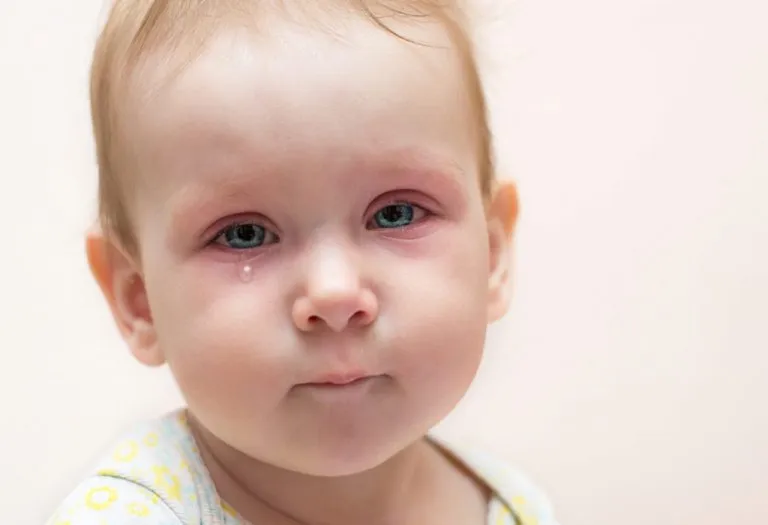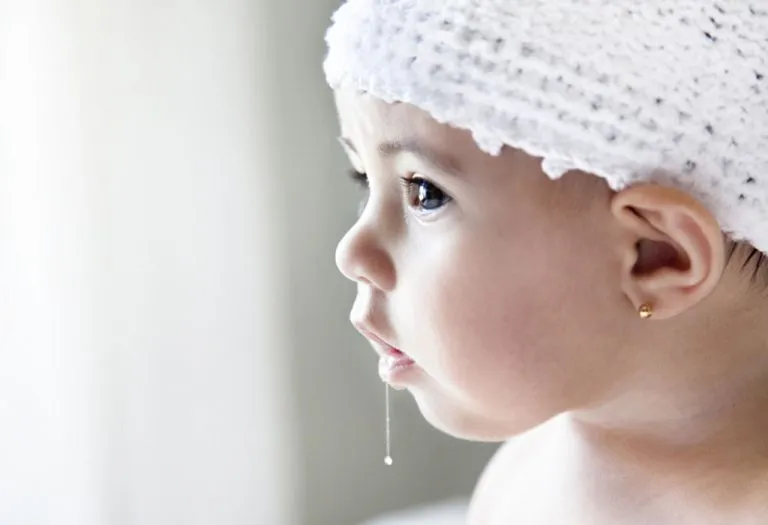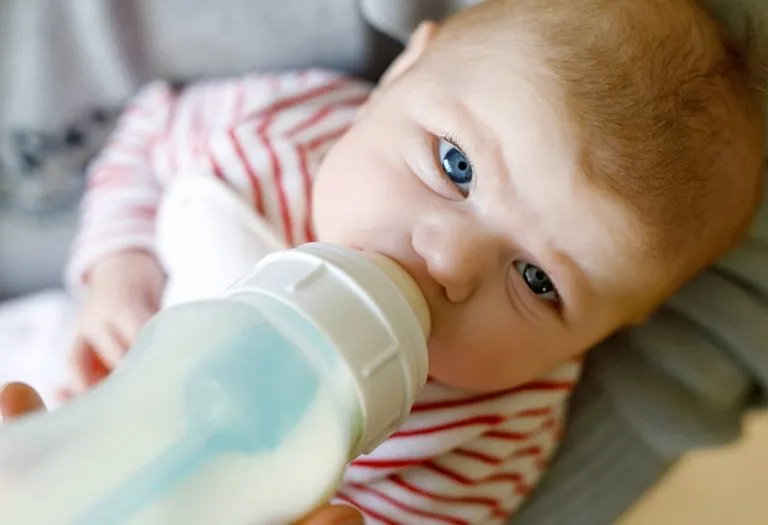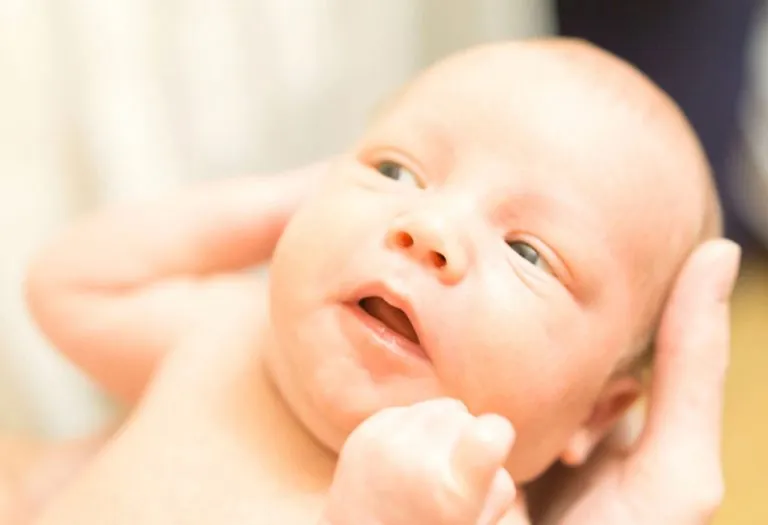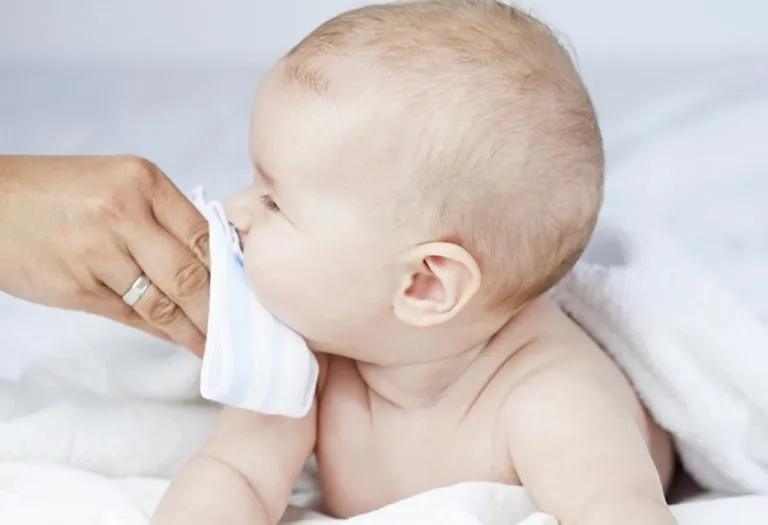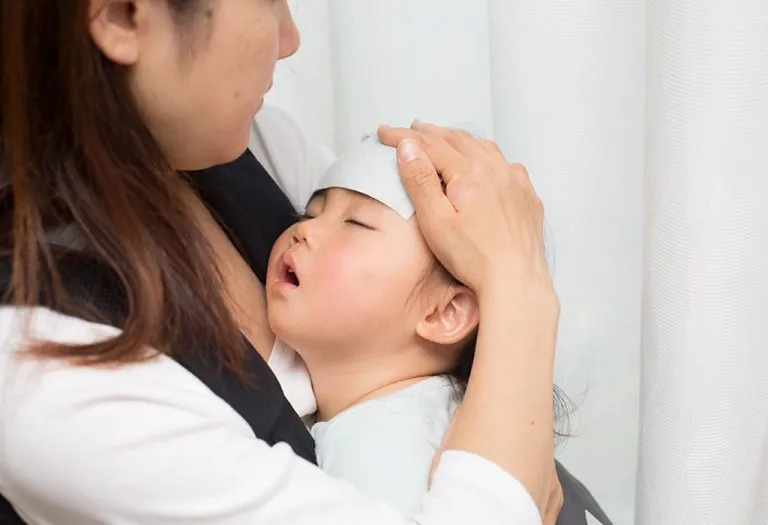Newborn Eye Discharge: Causes, Symptoms, & Effective Treatments

- Signs/ Symptoms of Eye Discharge in Newborn Babies
- What Are the Causes of Eye Discharge in Newborn Babies?
- Treatment for Eye Discharge in Newborn Babies
- When to See the Doctor
- FAQs
At times, your newborn baby could experience physical issues you were never prepared for. It could be worrisome to you and also cause discomfort to your little one. Although most issues can be taken care of, the ones affecting the most delicate parts of the body might put you in a difficult spot, for example, unusual discharge from your newborn’s eyes.
Your baby’s eyes are super delicate and frequent discharge from them can give rise to a lot of questions in your mind. Although it is common in many infants, understanding why and how it occurs will ease some of your worries and also help you address it better. This article should help you with all the information you need to know about eye discharge in newborn babies and ways to deal with it. But first, let’s check out some signs of eye discharge in a newborn baby.
Signs/ Symptoms of Eye Discharge in Newborn Babies
Eye discharge in newborn babies could indicate certain physical/health issues. It is, therefore, important to keep a close eye on the appearance of the eye discharge. If you see any of the following kinds of eye discharges in your newborn baby, you must take necessary actions immediately (1).
- Excessively watery eyes.
- Frequent pus formation.
- Sticky eyes with frequent pus that forms crusts on the eyelashes and eyelids.
- Puffy eyelids.
- Yellow or green pus in the eyes.
- Red or pink eyes with sticky discharge.
What Are the Causes of Eye Discharge in Newborn Babies?
There might be many reasons for eye discharge in infants, and it could be something as simple as a common cold. Hence, it is important to find out what might be causing eye discharge in your baby. Some of these causes are listed below:
1. Eye Infection
A baby may have watery eyes, which is a sign of an eye infection. An infection may develop due to bacteria, fungi, or virus that your baby may have come in contact with (2). It can even occur when the baby comes in contact with a bacterium while passing through the birth canal. If your infant has redness or watery discharge, it is a sign of an eye infection.
2. Blocked Tear Ducts
Around 10 per cent of newborn babies have a condition called a blocked tear duct. In this condition, the baby has persistent watery eyes and the water does not drain properly. It leads to the accumulation of water in the tear ducts, which later runs down the cheeks even when the baby doesn’t cry. Some more symptoms of this condition include pus-like discharge and redness in the eye, particularly in the corner close to the nose (3).
3. Foreign Particle in the Eye
Particles of dust or dirt can get blown into your baby’s eyes leading to teary eye discharge. Your baby might blink constantly, and cry due to the pricking sensation caused by foreign particles.
4. Common Cold
Discharge in newborn eyes could also be due to the common cold. As common cold is contagious, your baby might get it from the family members who have a cold. If a baby suffers from a common cold, it can lead to a blocked or runny nose and eye discharge.
5. Bacterial Conjunctivitis
Bacterial conjunctivitis is a highly contagious infection which could also lead to eye discharge that an infant may have contracted from you or your family members. Common symptoms of bacterial conjunctivitis are pus discharge from the eyes and sticky eyelids. This infection can occur in one or both eyes (4).
By now, you are probably wondering if there is treatment available for eye discharge in newborn babies. In the next section of the article, we shall discuss some measures you can take at home and the treatment the paediatrician is most likely to give if the discharge is due to an infection. Read on to know more.
Treatment for Eye Discharge in Newborn Babies
If you notice any of the symptoms mentioned above in your newborn baby, you must not panic and take the necessary steps to treat them. Although it is recommended that you consult a paediatrician, you can tackle some cases at home. Let’s find out what you could do if your newborn has eye discharge.
1. Wipe Away any Discharge
As mentioned earlier, you can wipe away the discharge from around the eyes, especially when you notice persistent watery eyes in your baby. You may use a clean, soft, sterilized cloth/ towel to dab the water. If the discharge is sticky, you can use some warm water to soak the cloth/ towel and then gently wipe over and around your baby’s eyes.

2. Treating Blocked Tear Ducts
If your baby has a blocked tear duct, one of the ways you can help open it up is by gently massaging the inner lower corner of the baby’s eye, also known as the lacrimal sac. You can even massage your baby’s nose a couple of times or hold a warm compress over his eyes for 1-2 seconds a couple of times a day. If this doesn’t help, you must take him to a paediatrician.
3. Treatment for Bacterial or Viral Conjunctivitis
If your baby shows symptoms of conjunctivitis or pink eye, talk to your paediatrician immediately. He will prescribe an eye drop which should be administered as instructed. Keep an eye on your baby’s condition till his eyes get better and report any unusual discharge.
When to See the Doctor
Newborn eye discharge is common and often harmless, but certain signs may indicate an infection or other issue that requires medical attention. Here are key situations when you should consult a doctor (5):
- Persistent discharge: If the discharge continues for more than a few days without improvement.
- Yellow or green pus: Thick, colored discharge (not just watery or white) may signal an infection.
- Red or swollen eyelids: Indicates possible irritation or infection.
- Excessive tearing: Especially if accompanied by discharge, which could suggest a blocked tear duct.
- Sensitivity to light: If your baby seems bothered by bright lights.
- Fever: A fever along with eye discharge may indicate a systemic infection.
- No improvement with cleaning: If gentle wiping with a warm, damp cloth doesn’t help.
FAQs
1. Can breast milk help treat newborn eye discharge?
Some parents use breast milk as a home remedy due to its antibacterial properties. However, while it may help with mild irritation, it’s not a substitute for medical treatment if there’s an infection. Always consult a doctor if symptoms persist.
2. Does delayed cord clamping affect newborn eye discharge?
There’s no direct link, but delayed clamping may improve immunity. However, if discharge occurs, it’s more likely due to blocked ducts or infection rather than birth practices.
3. Is it normal for only one eye to have discharge?
Yes, especially with a blocked tear duct (common in newborns). However, if redness, swelling, or pus is present, it could still indicate an infection needing medical care.
4. Can overcleaning a newborn’s eyes worsen discharge?
Excessive rubbing or harsh cleaning can irritate the eyes. Use a clean, damp cotton ball (warm water) and wipe gently from inner to outer corner once or twice a day.
This was all about newborns and eye discharge. Your baby will not be able to express any discomfort he feels by using words, but there are signs that you can look out for to tackle eye discharge. To ensure the health of your baby’s eyes, it is important to watch out for these signs and treat them immediately.
References/Resources:
1. Boston Children’s Hospital – What is a blocked tear duct?
2. American Academy of Pediatrics – Eye Infections in Infants & Children
3. Nemours Kids Health – Tear-Duct Blockage
4. National Library of Medicine – Bacterial Conjunctivitis
5. HSE – Sticky eyes in babies and toddlers
Also Read:
Baby Eye Infections
Eye Problems in Babies
Sticky Eyes in Newborn Infants
Dark Circles Under Baby’s Eyes
Home Remedies for Baby Eye Infection
Was This Article Helpful?
Parenting is a huge responsibility, for you as a caregiver, but also for us as a parenting content platform. We understand that and take our responsibility of creating credible content seriously. FirstCry Parenting articles are written and published only after extensive research using factually sound references to deliver quality content that is accurate, validated by experts, and completely reliable. To understand how we go about creating content that is credible, read our editorial policy here.







